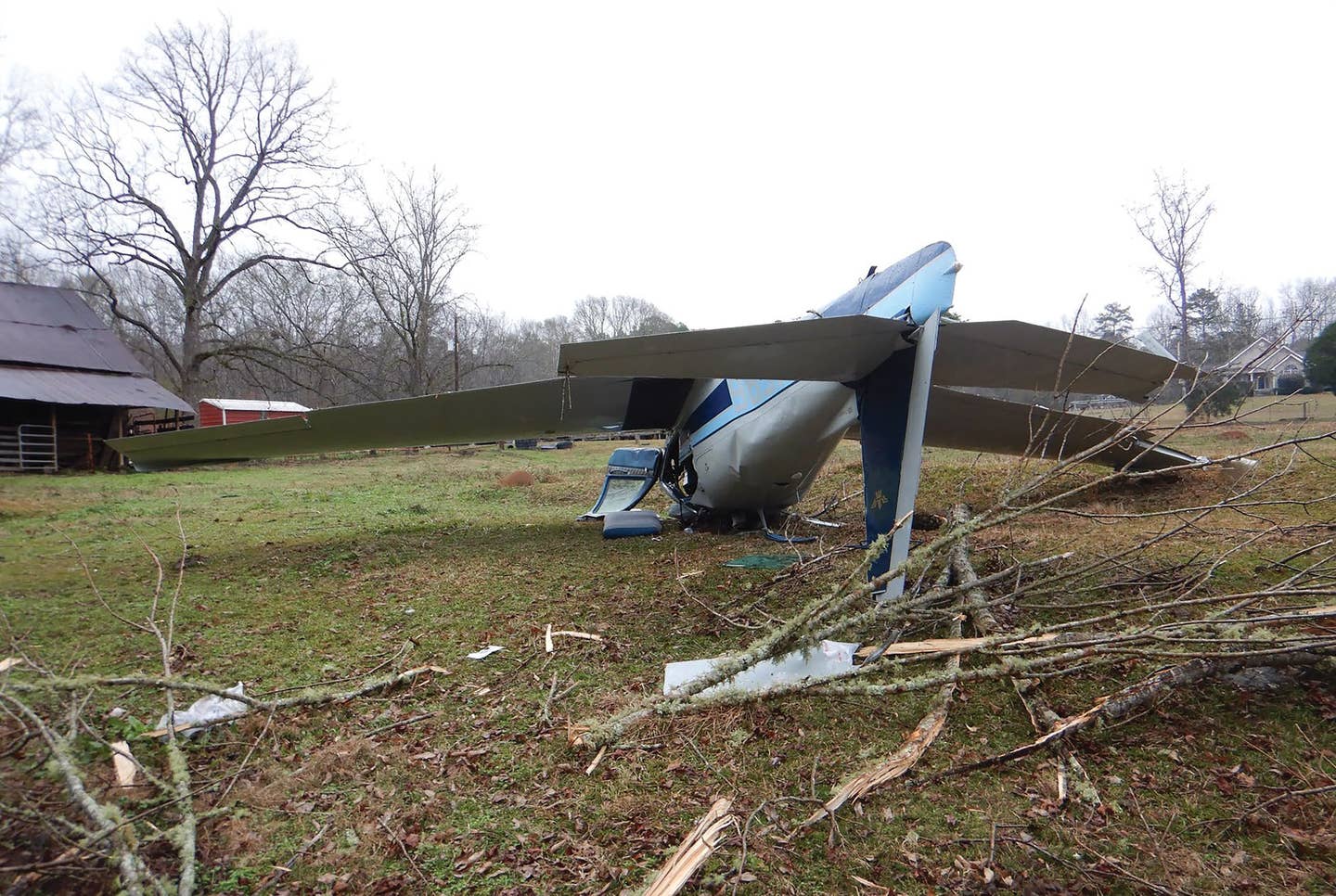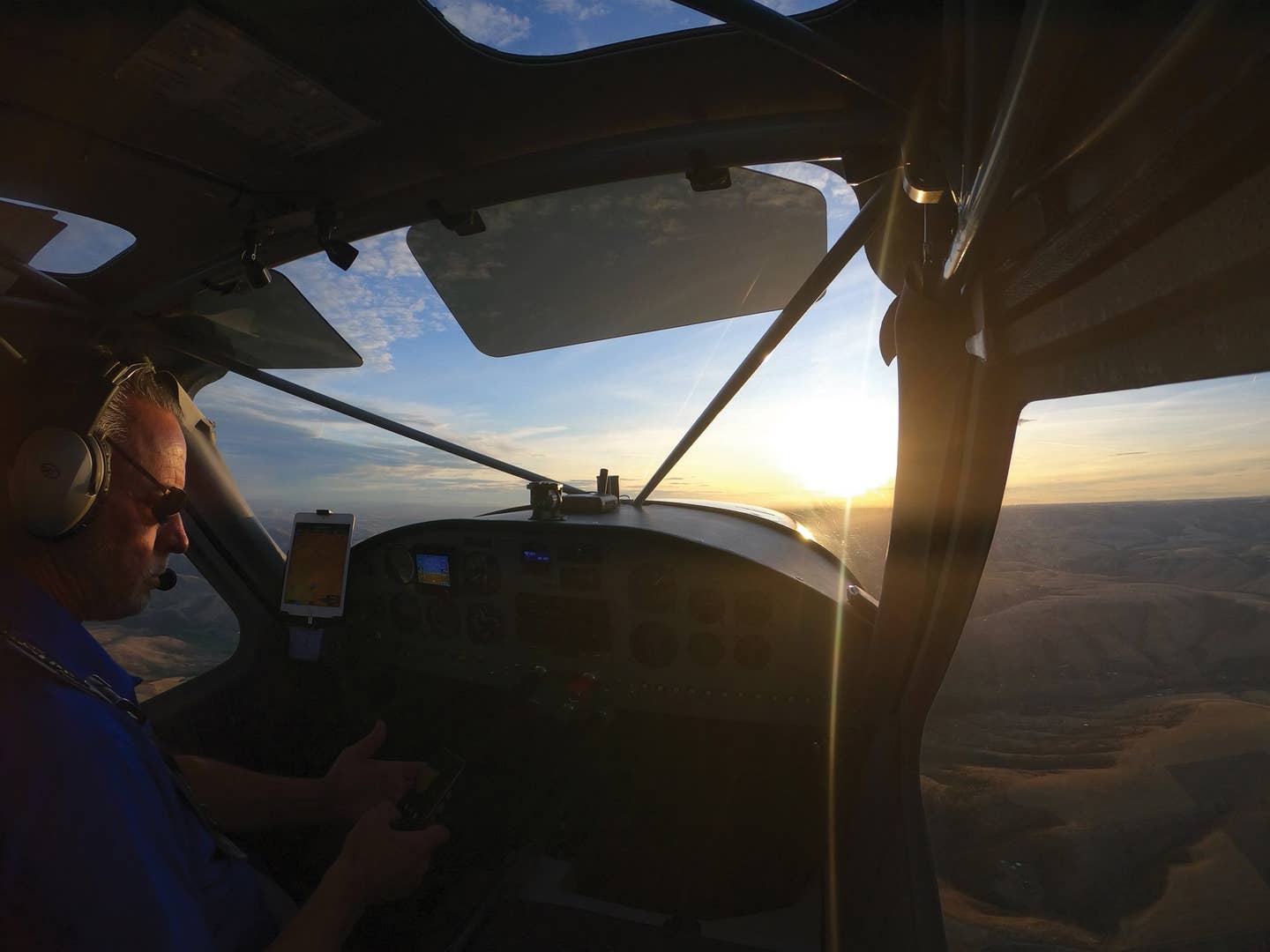Listen To Your Airplane!
Keeping your ears open can keep you one step ahead of trouble.
"Hmm, did you just see that loss of RPM?" I asked the friend of mine who was flying with me.
He hadn't noticed.
But I did. In fact, I was no longer able to produce a full normal 2450 RPM for cruise flight. The Stinson was only making about 2200 RPM. It was running smoothly, though.
A quick check of carb heat and magnetos generated no changes.
I quickly decided to take advantage of a close grass runway and put the aircraft on the ground, where we tried a little additional diagnosis, to no avail. I then called a friend for a ride home, during which I contacted my mechanic and asked for his assistance in the near future at diagnosing why the aircraft was experiencing a noticeable loss of power production.
Would you have terminated your flight nearly 50 miles from your home airport for a couple hundred RPM loss, even though the engine was still running smoothly? Many pilots would for something like a loss of power. But many would try to get the aircraft back to their home or where their maintenance provider is located. Some would assume it was a temporary fluke.
Experience has taught me that mitigating a potential future problem is something that's much better done early, and actively, than waiting.
In this case, the problem was relatively evident. A loss of full power production is pretty obvious.
But it won't always be.
What if the indication you noticed was less concrete?
In a Cessna 340 I fly, we've always been pretty good at monitoring engine information such as cylinder temperatures, oil pressures and oil temperatures.
On a flight about a year ago, we noticed that the right-engine oil temperature was starting to run about 75 degrees hotter than it normally did. There were no other changes in any engine indications at all. This is an easy indication to chalk up to "just a gauge acting up on an older aircraft."
We flew two flights like this and then decided to hand the aircraft over to our maintenance provider for a look at why it might be doing this. He initially didn't see anything, and since operating temperatures were "still in the green," he wanted to chalk it up to just a gauge aberration and set us with a "new normal" temperature expectation. It didn't sit right with us.
The gauge had been trouble-free in the past and was reading consistently now, just at a higher temperature. I may not be the absolute smartest guy, but I don't consider that just a coincidence. The oil temperature gauge is there to do a job---report the oil temperature. It was doing that, and the average operating temperature had changed. There was probably a reason.
Not accepting the advice to just keep flying it, we dug deeper and managed to find a very small crack in a cylinder. It was causing that cylinder to run hot, the oil to get warmer and thus the oil temperature to indicate higher than usual. By not just continuing to fly it, we caught a problem and only ended up changing a cylinder instead of possibly doing much more damage.
Even in aircraft with limited gauges, they're there for a reason. They're indicators of what our aircraft is doing and experiencing, and we should listen to them.
Sure, some discretion is required. Many of us have seen gauges that are obviously questionable in their reliability and accuracy. Fuel gauges come to mind. When you're monitoring aircraft data, it doesn't mean that every single little burble or 25-degree change means the aircraft is going to experience a catastrophic failure, either.
Are you an aviation enthusiast or pilot? Sign up for our newsletter, full of tips, reviews and more!
I would be remiss if I didn't add a thought. If you have gauges in your aircraft that aren't working properly, get them fixed. You can't monitor and diagnose problems with faulty gauges. It may not be an issue if everything is running properly. They aren't there for when everything is running properly---they're there to give you an indication of when things aren't, to give you a heads up on something you might have missed without them.
Sometimes it's in our own minds. Any number of pilots who have flown over large expanses of water, trees, forests or mountains will describe the "auto rough" function that seems to kick in when the pilot looks down and sees no agreeable landing sites if there were actually an emergency. I know I've heard these gremlins in my mind many times. This is different, however, than a real, measurable gauge or indicator-driven indication that something isn't doing what it normally does or is supposed to do.
Use these gauges and indicators, listen to them and mitigate future potential risks by reporting them to a maintenance provider at your destination. Or, if it feels like it might be time to stop early, do just that. Even if it means you'll be getting a ride home from a friend and leaving your aircraft at a remote airport.
Listen to your gut also.
A friend of mine recently conveyed a story of flying a twin-engine aircraft that "just didn't feel like it was running correctly" during his runup.
This was a professionally operated cargo aircraft, a Cessna 404, to be specific, and he was a professional pilot with cargo to deliver.
He taxied back to the hangar and called maintenance.
A mechanic hopped in and ran it up with him. While the mechanic agreed it "sounded a little different than normal," he was unable to see anything that indicated there was a problem.
Here he was, a professional pilot with a professional mechanic, both saying, "something doesn't sound right" but unable to see anything actually indicating there was a problem. There was nothing officially saying something was wrong. So he dispatched on the flight.
About 800 feet off the ground, he lost an engine.
The short story here was that his aircraft had been parked between two Cessna Caravans on their ramp that took Jet A fuel, and the line guy was going down the line fueling aircraft. You see where this is going.
They eventually figured out that the line guy had accidentally put some fuel in my friend's Cessna 404. In the end, it was determined to only be about 4 gallons and just in the fuel tank on one side, but the line guy hadn't told anyone, and the resultant problem was what happened above.
When you or, even worse, you and your mechanic feel like something is wrong but just can't put your finger on what it is, don't fly the aircraft. Not being able to figure out what's wrong is no excuse for continuing to operate the aircraft.
Looking back to the case of my Stinson about which I spoke at the beginning of this article, it was a very good thing we landed. We found a broken rocker arm in the valve assembly that would certainly have generated more problems quickly. By stopping early, we not only found ourselves safely at an airport, instead of pushing an engine to failure and landing somewhere less agreeable, but it also very likely saved us significant additional costs that would have resulted from additional damage.
Doing what you can to nip a problem in the bud won't only keep you safer---it will also likely reduce the damage that could very possibly result from problems that might have been addressed earlier by keeping eyes and ears open to your plane's health.
Our aircraft give us clues and hints when problems are coming. If we pay attention to them, we can avoid worse problems and keep ourselves safer. Use those gauges and your gut to proactively solve problems instead of having to respond to full-fledged emergencies reactively.
Staying proficient is important, so be sure to visit our Risk archives, where the best instructors in aviation help you fly smarter and safer.

Subscribe to Our Newsletter
Get the latest Plane & Pilot Magazine stories delivered directly to your inbox






